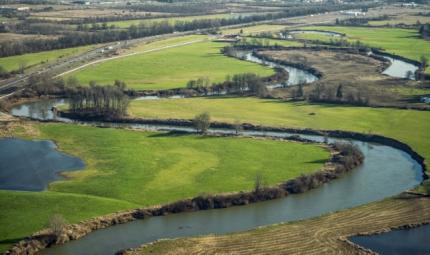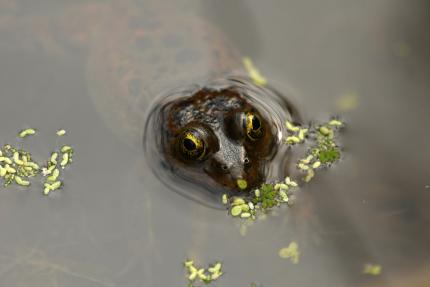ARCHIVED NEWS RELEASE
This document is provided for archival purposes only. Archived documents
do not reflect current WDFW regulations or policy and may contain factual
inaccuracies.
News release June 10, 2020
- Emelie McKain, WDFW aquatic species restoration plan manager, 360-810-0473
- Rachel Blomker, WDFW communications, 360-701-3101
- Curt Hart, Ecology communications, 360-701-1220
CHEHALIS – Using Washington Department of Ecology funding, a steering committee working to restore aquatic ecosystems in the Chehalis Basin is directing $4.7 million in state grants to support local job capacity and fund 20 aquatic habitat restoration projects (PDF).

Projects in Grays Harbor, Lewis, Mason, and Thurston counties range from on-the-ground efforts to acquire land, remove fish passage barriers, install woody debris, and relocate and restore stream channels, to designing large-scale habitat restoration plans. Some grants are aimed at helping local organizations develop and implement new habitat projects.
Project funding also will help support about 60 part- and full-time jobs, while volunteers are expected to contribute more than 800 hours.
“It’s exciting to see a variety of priority projects receive funding,” said Emelie McKain, aquatic species restoration plan manager for the Washington Department of Fish and Wildlife (WDFW). “In addition to restoring important habitat, these projects will benefit communities in the basin by creating jobs, and improving local water quality and floodplain functions, while offering resiliency to climate change impacts.”
In addition to salmon and other native fish species, the state’s second-largest river basin also provides habitat to Washington’s largest diversity of amphibians, such as frogs and salamanders. The steering committee approved funding for two projects focused on protecting and improving habitat for the federally threatened Oregon spotted frog.

McKain said the aquatic species restoration projects are expected to protect:
- Up to 414 acres of riverside and floodplain habitat
- One mile of off-channel habitat
- 2.25 miles of riverbank
The projects will restore:
- 15 acres of riverside habitat
- 0.7 miles of instream habitat
- More than 10 miles of accessible streams for migrating fish
They will create:
- Designs for large-scale restoration projects for 11 miles of habitat
- 10 new large-scale restoration project opportunities with interested landowners
- Five new riparian- and floodplain-focused project opportunities with interested landowners
- About 60 jobs—including at least seven new dedicated project sponsor roles.
The steering committee selecting restoration projects is made up of representatives from the Quinault Indian Nation, Confederated Tribes of the Chehalis Reservation, and Washington Department of Fish and Wildlife.
The projects are part of the broader Chehalis Basin aquatic species restoration plan that supports the Chehalis Basin Strategy to restore aquatic species habitat while reducing flood-related damage in the Chehalis Basin.
As restoration projects get underway, the steering committee and Chehalis Basin Board will identify critical information gaps to help guide future restoration efforts. The board was established by the state legislature to provide long-term oversight of the strategy.
Ecology’s Office of Chehalis Basin administers legislative funding to put the combined fish and flood strategy in place and works closely with the board, local government representatives from Grays Harbor, Lewis, and Thurston counties, the Chehalis and Quinault Indian tribes, basin farmers and other landowners, and local conservation and salmon recovery entities.
The Chehalis Basin encompasses 3,400 miles of perennial streams and rivers in southwest Washington. Besides the Chehalis River, the basin includes the Black, Elk, Johns, Hoquiam, Humptulips, Newaukum, Satsop, Skookumchuck, Wishkah, and Wynoochee rivers, and their tributary streams.
WDFW is the state agency tasked with preserving, protecting and perpetuating fish, wildlife and ecosystems, while providing sustainable fishing, hunting, and other recreation opportunities.